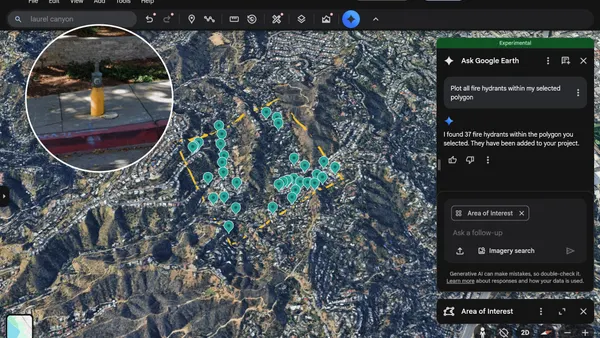Dive Brief:
- Researchers at Switzerland's Swiss Federal Institute of Technology in Zurich (ETH) have developed a new timber construction method using robotics, according to a statement from the university, that will allow them to more easily build complex wood structures.
- ETH Zurich engineers developed the Spatial Timber Assemblies (STA) process in collaboration with Erne AG Holzbau, a contracting firm that specializes in commercial and industrial timber construction. A computer-aided design program turns virtually any design into a buildable, load-bearing structure by calculating the necessary positions and angles, according to Fast Company Design. Robotic arms, along with some help from human workers who screw and bolt the members together, are able to precisely position the wood pieces and drill the appropriate holes. By using the STA method, reinforcing metal plates and bolts can be eliminated, thereby reducing costs.
- If changes are made to the design after the STA method has started, the computer model can be adjusted to compensate, keeping construction moving forward. Researchers will prefabricate six timber modules using the new method and assemble the pieces into a 1,076-square foot, two-story house dubbed the Dfab House, which will be the first large-scale use of the STA process.
Dive Insight:
Robotic-based developments like ETH Zurich's not only have the potential to create a structurally sound building with more ease and efficiency, but they can also alleviate the shortage of skilled labor that the construction industry is facing right now. In fact, if ETH Zurich is correct, STA surpasses the skill levels of human construction crews when building such precise and complex structures.
Superintendents and foremen are also in high demand, and another tech group might have a solution to that problem as well. Startup Doxel has invented a system that combines robotics, artificial intelligence and Lidar laser scanning to monitor the quality of work in place and keep a project on schedule using an autonomous robot that can climb stairs and move around a job site. Again, this robot's capabilities might surpass those of its human counterparts because it can reportedly immediately detect accuracy down to the millimeter.
These and other robotic applications have the potential to take over the dangerous work that, according to the Occupational Safety and Health Administration, killed more than 5,000 construction workers in 2016. In fact, robotics and automation are making so many advancements in the construction industry that they are expected to replace three million workers in the next 40 years.










